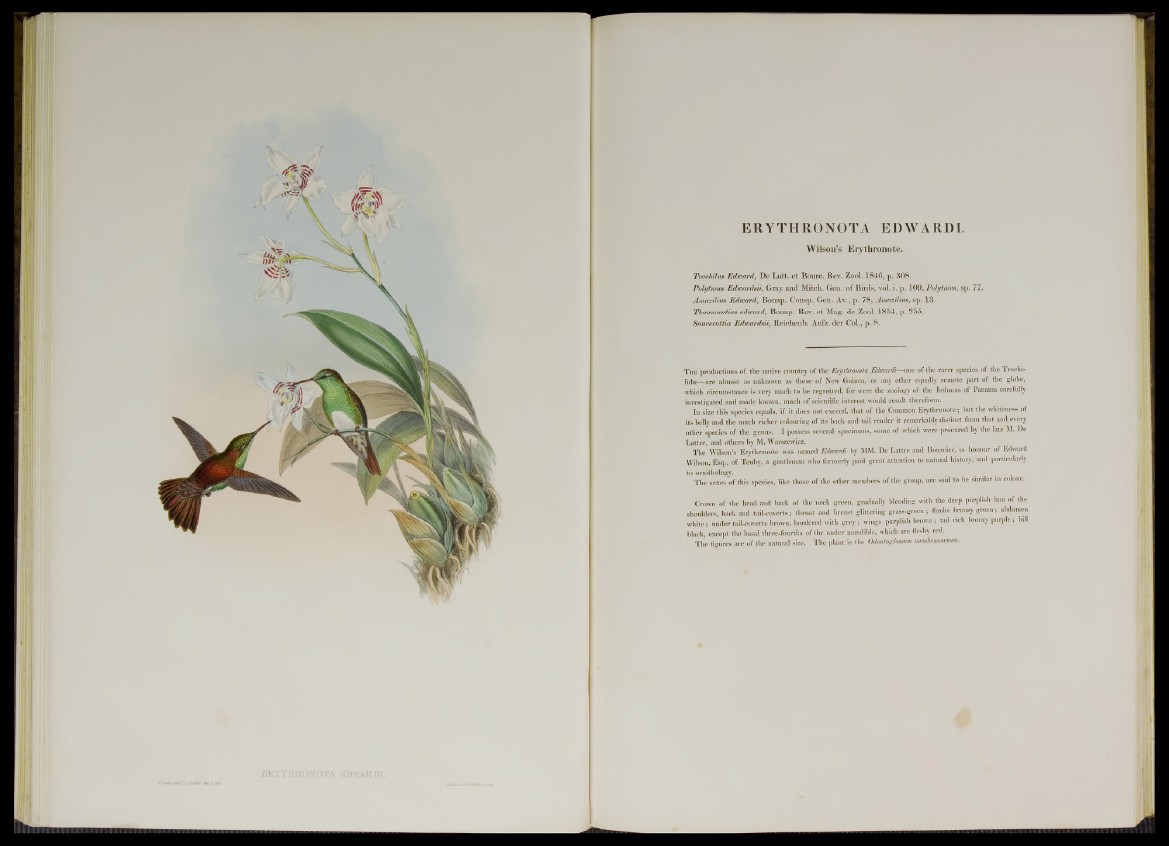
ERTTEROKOTA EDWARDI.
ERYTHRONOTA EDWARDI .
Wilson’s Erythronote.
Trochilm Edward, De La tt. e t Bourc. Rev. Zool. 1846, p. 308.
Polytmus Edwardsii, Gray and Mitch. Gen. o f Birds, vol. i. p. 109, Polytmm, sp. 77.
Amazilius Edward, Bonap. Consp. Gen. Av., p . 78, Amazilius, sp. 13.
T/iaumantias edward, Bonap. Rev. e t Mag. de Zool. 1854, p. 255.
Saucerottia Edwardsii, Reichenb. Aufz. der Col., p. 8.
T he productions of the native country of the Erythronota Edwardi—one of the rarer species of the Trochi-
lidse—are almost as unknown as those of New Guinea, or any other equally remote part of the globe,
which circumstance is very much to be regretted, for were the zoology of the Isthmus of Panama carefully
investigated and made known, much of scientific interest would result therefrom.
In size this species equals, if it does not exceed, that of the Common Erythronote; but the whiteness of
its belly and the much richer colouring of its back and tail render it remarkably distinct from that and every
other species of the genus. I possess several specimens, some of which were procured by the late M. De
Lattre, and others by M. Warszewicz.
The Wilson’s Erythronote was named Edwardi by MM. De Lattre and Bourcier, in honour of Edward
Wilson, Esq., of Tenby, a gentleman who formerly paid great attention to natural history, and particularly
to ornithology.
The sexes of this species, like those of the other members of the group, are said to be simdar in colour.
Crown of the head and back of the neck green, gradually blending with the deep purplish hue of the
shoulders, back and tail-coverts; throat and breast glittering grass-green ; flanks bronzy green; abdomen
white; under tail-coverts brown, bordered with grey ; wings purplish brown ; tail rich bronzy purple; bill
black, except the basal three-fourths of the under mandible, which are fleshy red.
The figures are of the natural size. The plant is the Odontoglossum mmbranaceum.